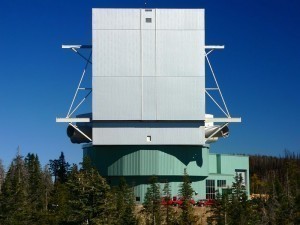Largest Telescope
The world’s largest telescope is the LBT in the Pinaleno Mountains of southeastern Arizona. It utilizes two mirrors 8.4 m (27 ft) wide. Its effective aperture is 11.9 m (8.4 mx2).
Overview of the LBT
It is one of the most sophisticated telescopes in the world. The unit employs two 8.4-meter (28 ft) mirrors set on a single base. The LBT utilizes adaptive and active optics. The 8.4 meter aperture mirrors function as the collecting area. The area is equivalent to 11.8 meters (39 ft) circular aperture. This is superior to other telescopes.
However, it is difficult to compare with other telescopes. This is because the LBT gathers light at a lower diffraction level. The LBT also has an interferometric mode included.
The baseline for the aperture synthesis maxes out at 22.8 meters (75 ft). The world’s largest telescope saw first light at October 12, 2005. By January 2008, the LBT was functioning fully.
Other Big Telescopes
Second to the LBT in size is the Gran Telescopio Canarias (GTC) with an aperture of 10.4 m. The aperture is 410 in. It is at ORM, Canary Islands. The third largest are Keck 1 and Keck 2. The effective aperture is 10 m and the aperture is 400 in. They are at Mauna Kea Observatory, Hawaii in the US.
Different Types of Telescopes
Variants are determined by the electromagnetic radiation utilized for observing objects. The ones described above are optical telescopes. They look at the EM spectrum’s visible area. Other types are x-ray, gamma-ray, infrared and radio telescopes.
Radio waves and light are the most easily observable from the planet. Other electromagnetic radiation is blocked by the atmosphere. That is why many telescopes are based in space. Space-based devices can more easily see infrared light.
Historical Background
Telescopes have been around since the 1600s when the telescope lens were invented by the Dutch. These early glasses magnified objects by three. In 1609, Galileo redesigned the device. He ended up with a telescope that could magnify objects 32 times their size.
These were refracting devices. Modern devices are termed catadioptric. Instead of just lenses, they also use mirrors. The more advanced units also use other components.
The world’s largest telescope was not built just for show. It is actually necessary to view the various objects in space. For this reason, it probably won’t be long before an even larger one has to be built.





